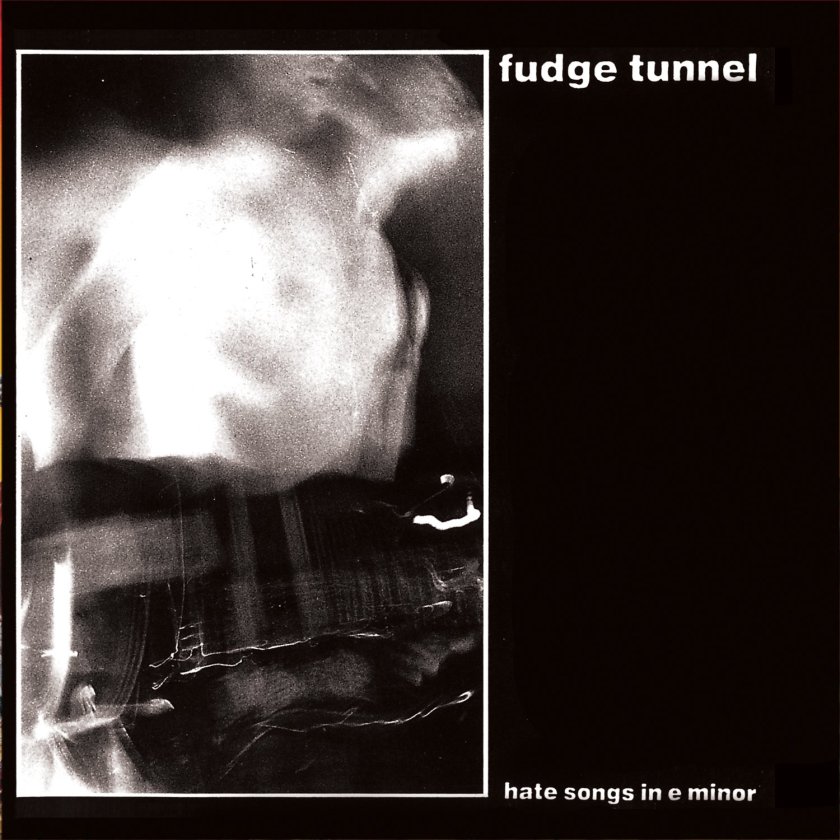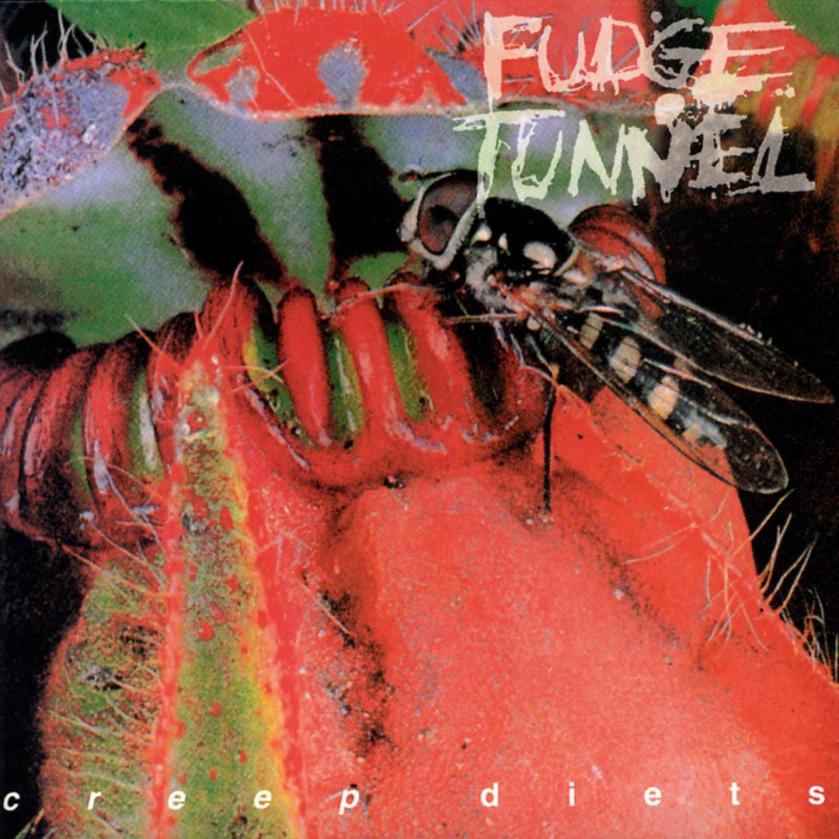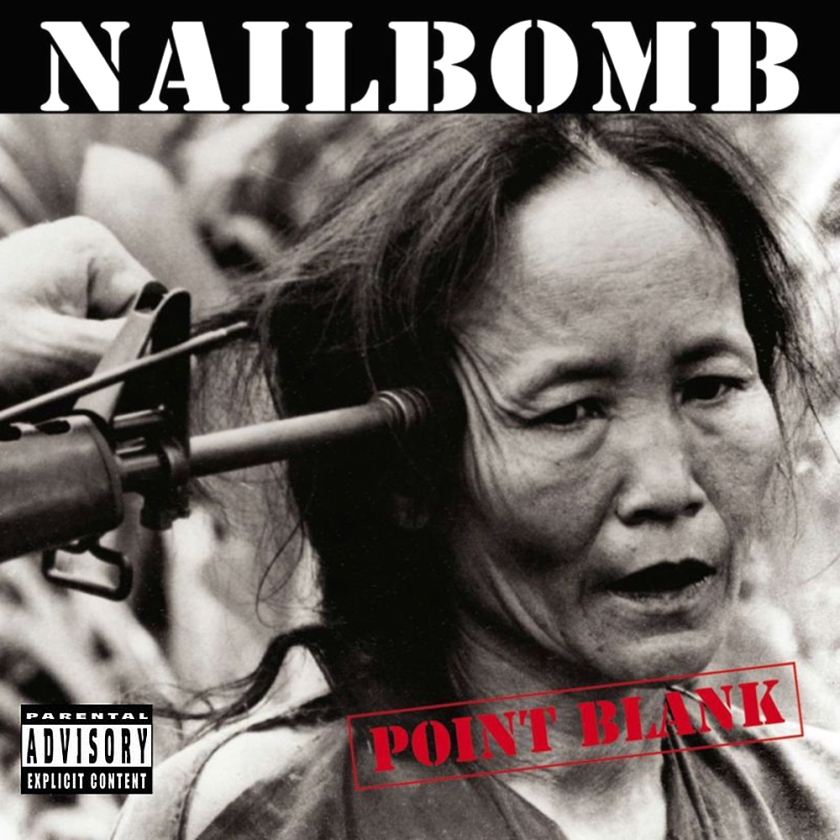Born on September 12th, 1970 in Wolverhampton, UK, guitarist/vocalist Alex Newport is responsible for some of the most unique and interesting heavy music of the 1990s and early 2000s. Although his discography is far from vast, what it lacks in quantity it more than makes up for in quality, encompassing metal, hardcore, noise rock, industrial and beyond. As a producer, mixer and engineer he went on to work with popular acts such as Death Cab For Cutie, At The Drive-In and The Mars Volta, but there was a time when Newport was an underground innovator, responsible for some of my favorite heavy music of all time. So without further ado, let’s take a quick look at the discography of the man who convinced me to go on a creep diet and never look back…
 Fudge Tunnel – Hate Songs in E Minor (Earache, 1991)
Fudge Tunnel – Hate Songs in E Minor (Earache, 1991)
Newport’s first band Fudge Tunnel started in 1988, quickly gaining the attention of Earache Records on the strength of two EPs (one of which is the awesomely titled Sex Mammoth) with a sound that was too noisy to be metal and too goddamn heavy to be alternative rock. Loaded with thick, Sabbathy riffage and plodding tempos, the band’s debut full length Hate Songs in E Minor is an ugly, bludgeoning piece of work that’s as infectious as it is pummeling. Producer Colin Richardson (Carcass, Bolt Thrower, Brutal Truth and just about every other cool Earache Band) doesn’t attempt to rein in Fudge Tunnel’s abrasive onslaught and instead lets the fuzz fly in all directions, bathing the listener’s ears in layers of steel wool distortion. Fudge Tunnel originals such as “Hate Song” “Spanish Fly” and “Tweezers” will harsh the fuck out of your mellow and the band’s sludged-out cover of Cream’s classic “Sunshine of Your Love” is the icing on the corrosive cake.
 Fudge Tunnel – Creep Diets (Earache, 1992)
Fudge Tunnel – Creep Diets (Earache, 1992)
Hate Songs in E Minor was a strong first album, but Fudge Tunnel somehow managed to top themselves with 1993’s Creep Diets, which retained the heaviness of the debut but also found them moving in a catchier, more musical direction, as evidenced by tracks such as “Grey” and “Ten Percent.” Creep Diets also benefited from improved marketing and distribution thanks to Earache’s recently inked deal with Columbia Records, and one would think that the major label boost, combined with Fudge Tunnel’s improvement in both the songwriting and musicianship departments would’ve garnered them at least a modicum of mainstream attention (similarly heavy bands such as TAD, Melvins, Helmet and Therapy? were all signed to majors around this time in the wake of Nirvanamania) yet for whatever reason the trio remained a cult band. Regardless, Creep Diets is a stellar slab of heaviness that can more than hold its own when stacked up against the likes of landmark releases such as Houdini and Inhaler. The album is also significant in that it marks Newport’s first production credit for a full length album.
 Fudge Tunnel – The Complicated Futility of Ignorance (Earache, 1994)
Fudge Tunnel – The Complicated Futility of Ignorance (Earache, 1994)
If Creep Diets is the most accessible of Fudge Tunnel’s trilogy of albums, then The Complicated Futility of Ignorance is by far their heaviest and most punishing. The album follows Newport’s collaboration with Sepultura’s Max Cavalera in Nailbomb and one can only assume that spending time with the man that gave the world Beneath the Remains, Arise and Chaos A.D. might’ve given him the urge to carry some of that brutality over to his main band. Then again, it could also have been a reaction to Creep Diets‘ failure to significantly expand the band’s audience. Whatever the case, The Complicated Futility of Ignorance is Fudge Tunnel at their gnarliest, bringing things back to the noisy and nihilistic attack of Hate Songs in E Minor and upping the chugging heaviness quotient to deliver one of the most underrated extreme metal albums of the mid-nineties. The band’s third album would also be their swansong (not counting the posthumous odds ‘n’ sods collection In a Word) and it’s a damn shame, because its churning, sludgy violence proved that Fudge Tunnel were one of the most idiosyncratic bands to come out of the UK metal scene.
 Nailbomb – Point Blank (Roadrunner, 1994)
Nailbomb – Point Blank (Roadrunner, 1994)
Of the rare occasions in metal where a supergroup actually lived up to the hype, Nailbomb might be the most devastating. Combining aspects of metal, hardcore and industrial, Newport and Max Cavalera created something that recalled their respective bands, yet at the same time managed to sound fresh and hungry. Granted, what they were doing on Point Blank wasn’t totally without precedent, the UK’s Optimum Wound Profile had already released two albums worth of industrial/hardcore/metal on Roadrunner in 1992 and 1993, but Nailbomb took things to the next level in terms of both viciousness and heaviness. Indeed, listening to Point Blank is very much akin to having someone place your head between two cinder blocks and then having said blocks hit repeatedly with sledgehammers for an hour. Even when the album slows to a dead man’s crawl it still feels relentless, offering no respite from the avalanche of rabid dog vocals, mechanized drums and razor-wire guitars. Sadly, this would be the only time that Newport and Cavalera would join forces on record, but Nailbomb remains one of the most remarkable side projects to ever come out of the metal scene.
 Theory of Ruin – Counter-Culture Nosebleed (Escape Artist, 2002)
Theory of Ruin – Counter-Culture Nosebleed (Escape Artist, 2002)
After the dissolution of Fudge Tunnel in 1994 and Nailbomb in 1995, it would be seven long years before Newport would show up in another band. But make no mistake, Theory of Ruin was worth the wait; the group’s debut album Counter-Culture Nosebleed saw him joining forces with drummer Ches Smith (John Zorn, Secret Chiefs 3, Xiu Xiu) and bassist David Link (Slapshot) to create one hell of a racket. In some respects Newport was mining territory similar to Fudge Tunnel, taking that band’s noise rock tendencies and turning them up to eleven before smashing them together with an off-kilter post-hardcore vibe. Indeed, there’s a sense of tension at work throughout the album that recalls the likes of The Jesus Lizard and Big Black more than it does any of Newport’s past projects. Theory of Ruin manage to keep things dark and abrasive throughout the album’s thirty-eight minute duration, the album serving as a fitting conclusion to Newport’s career in heavy music by taking bits and pieces of everything that came before and twisting them into strange new shapes.
